STRATEGIC EVOLUTION
- By 0
- April 22, 2020
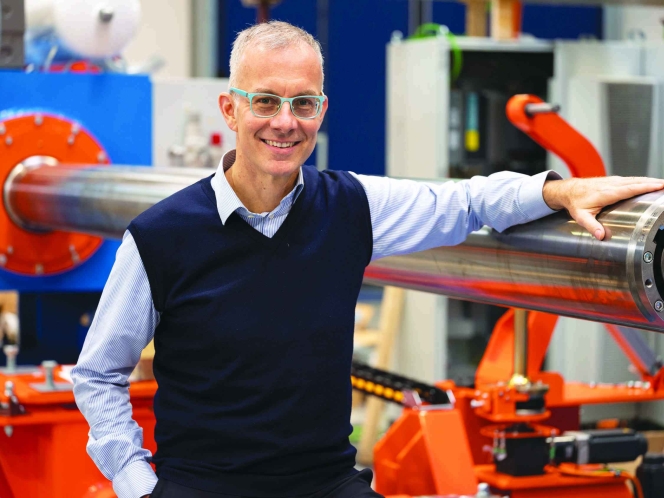
TT NEWS
Marangoni Meccanica, the leader in tyre assembly machinery design and production, has undergone a re-branding. It is now Marangoni Machinery. The new corporate brand identity comes at a time when the company, which was recently recapitalised and spun off from the Marangoni Group, is evolving through a strategic journey with the objective of offering to its customers an even more powerful support and commitment.

The company has been a leader in the market for long and has a unique brand identity. Marangoni says the new branding reflects the company’s market-leading position better and demonstrates the comprehensive lifecycle of machinery and services offered to its customers across the globe. The new brand Marangoni Machinery and its new logo work well across digital and physical channels. “They evoke a feeling of ideas, dynamism, collaboration, movement, positivity, speed—and velocity, which work all together for obtaining the highest quality and satisfaction for the customers,” Ricardo Mastronardi, the new CEO, says.
“Marangoni Machinery has a unique value proposition in the global tyre industry, especially in the big tyre segments like Agriculture and OTR. We are driven by a continuous Customers focus: each new feature is designed to support Customer’s growth and performance, oriented to best efficiency and quality, Mastronardi told Tyre Trends
Foreseeing and inventing new solutions
Research is an activity of fundamental importance for Marangoni Meccanica. The company’s collaboration with the Department of Industrial Engineering of the University of Trento - Laboratory of Maieutics, allows sharing knowledge and skills that can greatly improve the technical culture of its designers. The project ‘Marangoni Station - New Generation’ aims at creating software that can be used on a variety of IT media

The company’s main activity is the design and manufacturing of machines and technologies related to the production of new tyres, mainly machinery for tyre building of Agricultural and OTR tyres industry.
Within the flow of activities that lead to the creation of a product, research is an area of fundamental importance. The ability to match the customer's needs and, if possible, to foresee them by inventing new solutions is Marangoni Meccanica’s core strength.
The company designs around the customer’s needs, searching for new solutions to address improvements, optimisation and coming industry challenges an eventually find out new needs and anticipate what the market will require in the coming years.
Software solution

Most of the companies in its customer portfolio are not equipped with integrated supervision systems, especially for the production process. Those companies simply exchange data within their databases regarding the manufacturing process aspects, for example recipe data loading necessary for machine work, neglecting the aspects related to the plant components. Those topics are usually managed in a traditional way, not integrating the new production technologies that allow improving the working conditions by increasing the productivity and the production quality of the plants.
Being a partner who can cooperate, apart from being a mere supplier, even in the areas of plant management, is a distinctive aspect that no competitor is currently able to provide. The Company can customise and enhance the essential engineering functions for its applications, such as the total integration of external software tools developed with research institutions for satisfying the most demanding customers.
For the development of this new powerful software platform, Marangoni Meccanica has started an important collaboration with the Department of Industrial Engineering of the University of Trento - Laboratory of Maieutics, which will allow sharing knowledge and skills that can greatly improve the technical culture of its designers. The Department research group has been working for many years on the development of technologies, so it is an important reference in the industrial engineering field, having the advantage to count on the skills of all the project members within the company. The project consists of software writing for industrial automation components, characterised by a strong inter-disciplinarity among sectors such as user interfaces, industrial process engineering, communication networks and software design.

Reasons underlying the research
The modern scenario of industrial plants requires an ever-increasing level of integration of functions such as data communication management, operator-machine interfaces, data processing and connections to company systems for production and maintenance management. Industry 4.0 responds to the latter needs, as this new industrial revolution aims to develop data communication networks via the Internet and similar networks. This project adheres to the basic values of this new development context, namely the development of machine data management systems (SCADA - Supervisory Control And Data Acquisition), data analysis and communication on data networks, as well as creating interfaces for the operator of the production plants (HMI - Human Machine Interface).
Therefore, supervision and control software play a fundamental role in the management of complex machines and systems.
HMI and SCADA are two terms closely related to the extent to which an operator is an integral part of the components of a plant management system.
HMI and SCADA

Human-Machine Interface (HMI) is a control panel designed for interactive communication between the operator and the process / machine carrying out the tasks of entering orders, display the results connected to the process / machine status in real time. Moreover the Marangoni Machinery vision is to let HMI to become an effective gate to get access to the whole production machines even into a network and/or stand-alone mode: in such a way the Customers can have access to a variety of information (operations, maintenance, alarms etc.) to enhance the production lines to be in real-time controlled.
SCADA system is a Supervision, Control and Data Acquisition System. It is also referred to as 'telemetry,' a system having a full data communication and data control, which includes two-way communication (measurement and control) between the process system and the operator's position. In addition to this, the capacity of SCADA systems to control and monitor multiple devices, such as remote terminal units (RTUs) connected with process transmitters and final control devices, implementing basic control functions such as Start / Stop, or multiple regulation circuits including safety shutdowns, warning, notice, or PID controllers, allow the RTU devices to communicate digitally with a Master Unit (MTU) terminal in a central position where operators can monitor the process and intervene in it.
This HMI SCADA software is used in all sectors with the aim of providing a direct means of machine control, automation, security, data storage, analysis, and communications as well as allowing connectivity to a wide range of functions within the system.
In a few words the HMI software is used to monitor SCADA systems.
Customers have been increasingly demanding SCADA / HMI systems with the following features:
1. Improve control and monitoring of the process, system or plant.
2. Manage important information, such as warnings, alarms, machine shutdown, and increase productivity by decreasing shutdowns. Analysing data in real time in order to prevent unexpected stops, and resume activity more quickly.
3. Simplify the interaction between systems of different manufacturers with proper communication modes.
4. Optimise the effectiveness of user control on data and help with alarms or data groups to know the status of the system and the possible problems.
5. Enhance the quality for the correct functioning of the system.
6. Reduce operating costs through the integration and the maintenance of the process and plant.
It consists of additional software to complement our supply of machines and plants whose complexity requires systems allowing a more intuitive and quick management control, helping our customers to monitor the process in real time, especially remotely through communication networks (data, videos, etc.).
.jpg)
Aim of the Project
This project aims to create an HMI / SCADA software platform offering:
- A user-friendly application in terms of persistence, business logic, graphic interface;
- The use of technologies for the creation of architectures and software structures that guarantee the optimisation of software writing and maintenance, through proper software patterns;
- The creation of responsive software allowing their use on multiple web browsers and various platforms (PC, tablet, mobile);
- The creation of suitable documentation both for the upstream analysis of the engineering process and for the control of the final product.
Goals
The result of the project is the creation of a development environment consisting of a series of applications able to:
- manage basic recipes for each type of machine
- communicate with the PLC by managing the flow of information that starts and arrives from it.
- have a graphical interface (HMI) that can be easily used in all the application contexts (design, control, monitoring, visualizations, reporting).
- allow the use on multiple web browsers and various platforms (PC, tablet, mobile) at the highest possible application level.
Basically, Marangoni Meccanica customers ask for a support where, in addition to providing machines and systems, it can integrate product with their "company system," allowing an easy, functional use even by staff whose level of specialisation is not uniform. Hence the success of this project is to have a tool enabling the company to be for its customers more and more a partner, and not only supplier.
Interview
Perfectly in lane for era of transformations
Over the next five years, the industry is poised to enter a transformative era. Marangoni Machinery (MM), global tyre industry leader, especially in Agriculture and OTR segments, is perfectly positioned and prepared to play a leading role in this evolving context, “thanks to our creativity, flexibility and engineering innovation capabilities, assures the company’s CEO Riccardo Mastronardi
TT Report

What drives you to start afresh as a new entity? How much do you think Marangoni Machinery impact global tyre industry?
Marangoni Machinery (MM) has a great technological background and exceptional innovation and engineering capabilities. The new shareholders clearly perceived that this potential in the last years has been partially untapped and big opportunities were ahead of us, therefore they decided to invest. MM has a unique value proposition in the global tyre industry, especially in the big tyre segments like Agriculture and OTR. We are driven by a continuous Customers focus: each new feature is designed to support Customer’s growth and performance, oriented to best efficiency and quality.
How does Marangoni Machinery see the tyre industry evolving in the coming decade?
Technology innovations and developing end-user requirements are driving the off-the-road tyres market into unexplored territory, presenting fresh challenges to manufactures and suppliers. The global market for off-the-road (OTR) tyres is estimated to significantly grow in the next years.
Technological advancements and market changes in the OTR tyre industry are presenting several challenges to manufacturers and suppliers. From an end user’s perspective, the imperative is to continue to drive efficiency and productivity, even as equipment gets larger and places additional stress and performance demands on the tyre.
Over the next five years, the industry is poised to enter a transformative era and we in MM believe to be perfectly positioned and prepared to play a leading role in this evolving context, thanks to our creativity, flexibility and engineering innovation capabilities.
What is your added strength in R&D and also in business development?
MM R&D is oriented to a new Customer’s experience approach. The new machines are tailor designed according to Customer’s needs and requirements in order to achieve the best quality output, and at the same time best reliability, safety and productivity.
.jpg)
As customer demand and technology developments change, what challenges do you foresee in providing tyre making machinery?
Main challenges are about time to market and installed base refurbishment: nowadays Customers are looking for renewal plans to get new machines within short lead times, plus new equipment oriented to increase productivity for premium products as well, so our challenge is to be ready for both business needs by serving Customers on reduced lead-time and on increased quality output.
What new products do you plan to offer?
MM is mainly oriented to “turn-key systems”: from complete Tyre Building Machines up to all comprehensive “Production Site” composed by multiple production units with software supervision platform to get an integrated and efficient management manufacturing system architectures. About new products MM is offering new tyre building core technologies (drums, toolings and robotics) to enhance the tyre productivity and quality by proprietary patents and proven solutions, mostly oriented to Agro and OTR industry areas (Stage-1, Stage-2 and Unistage solutions with Strip-Winding embedded architectures).
Any move to widen your network of sales and after-sales services?

We are definitely strengthening our Sales and After Sales Organisation in order to better satisfy our growing Customer Base. We are also planning to internationalize our After Sales Services to be closer to our Customers’ production facilities and serve them better and quicker.
Are there any new areas in tyre industry that Marangoni Machinery plans to cover?
As said above, our company is characterised by our strong and distinctive engineering capabilities. Those capabilities allow us to tackle disparate challenges and solve them in a creative, effective and efficient way. Our deep knowledge of the Tyre Industry together with our distinctive capabilities, open for us unexploited opportunities that we plan to explore in the next years.
What other new elements have been included in the new entity?
We are in the process of transforming a family owned business into a structured and managerial modern company where M&A opportunities will be also explored.
What is your take on the general economic slowdown, particularly in the Asian markets?
Frankly speaking, till now, we are not experiencing any slowdown in our business leads, especially in Asia. In our Agriculture and OTR segments in Asia we experience a significant growth led by China and India, supported by all end-use sectors; much of the gain in radialisation is seen in this region; mechanisation of agriculture is definitely a major growth driver. We need to carefully consider the significant threat to global economic growth amid coronavirus outbreak
Do you see the new regulations in import/export in some markets impacting your business?
Not yet, potentially yes, even if our solutions are not so easily replaceable and customers loyalty is very high.
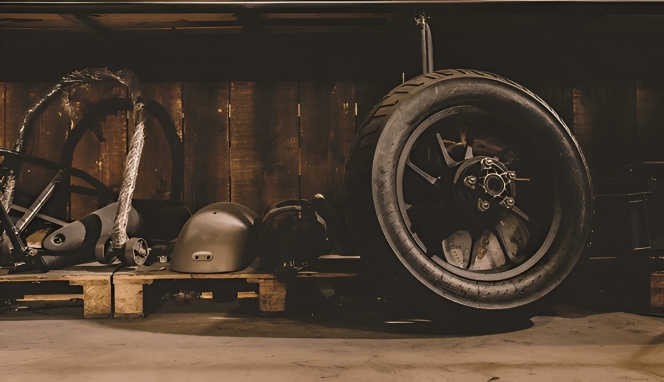
Fifty-seven years ago on 1st September 1968, I joined the rubber products manufacturing industry in Sri Lanka (then Ceylon) as a trainee in a medium scale footwear company. The only knowledge or rather awareness I had of rubber until that time was seeing the tapping of trees, adding a pungent liquid to the milky liquid, put on metal trays, squeezing the whitish slab of material through two rotating metal rollers manually rotated by a crank and putting them in a smoke shed that was available in some backyards to end up with a striped brownish sheet of rubber, which I later learnt was known as RSS. Later, in the early sixties, during our Organic Chemistry lessons, we learnt that C5H8 is the formula for Isoprene, which is the building block of natural rubber. Going down the memory lane of the past 57 years of knowledge acquisition in the rubber industry might turn out to be an exhaustive exercise. However, it is my sincere hope that some of my experiential insights might help the modern-day managers to seek areas that may strengthen their foundations in this era of rapid shifting sands.
I should say I am at a loss in finding an appropriate definition of knowledge from the vast interpretations which appear to be too academic. One practical and easy to understand definition I have come across in that knowledge is the ability to understand, apply and transfer information and experience to solve problems and adapt to changing circumstances, Merely the possession of facts is meaningless. It is the skill of using them effectively for survival, development and progress that is more important. It reminds me of the many research findings and innovations that are gathering dust in many institutions. In the case of early humans, knowledge emerged through direct observation of nature, trial and error and sharing same with groups. In my opinion, the context has virtually been the same over the ages, although the scope and the contents have undergone drastic changes during the course of human history, particularly through the four industrial revolutions and apparently heading for an unprecedented and a somewhat incomprehensible future.
If I am asked the question how I have acquired knowledge during my working life, I would say without any hesitation that it was through a process of osmosis. Those who studied botany under the biological sciences may perhaps vaguely remember how plants absorb water, minerals and other nutrients from the surrounding soil through their root systems by the process called osmosis. In a similar manner, we also acquire knowledge from the external environment through our sense facilities, namely the eyes, ears, nose, tongue and the skin, and through perceptions, which are processed by our brain and the central nervous system. The Buddhist doctrine gives a clear description of this process, which are well in line with the biological and physiological sciences. I, however, would not wish to go in to a philosophical deliberation at this point of time. Knowledge acquisition is a lifelong process with the ‘cradle to grave’ concept, and according to the modern scientific findings, starting at the moment of our conception in the mother’s womb.
I would now endeavour to delve a little into the knowledge acquisition modalities available to us trainees during our formative days of the career in the rubber industry from the late sixties onwards. The modern rubber technologist (if the term is still in use) may perhaps find them archaic as if they are viewing the archaeological remnants exhibited at a museum. It was hands-on experience from the beginning in what was termed a 3D industry, namely dirty, difficult and dangerous. This was mainly due to the particulate and dusty nature of the various fillers used such as carbon black and the toxicity of the rubber chemicals, coupled with the usage of high energy consuming motor driven machinery, both electrical and heat, usage of steam and compressed air, emission of high noise and vibration, fumes and high material load in some industries such as tyre manufacturing and tyre re-treading. The complexity and diversity are further aggravated by the macromolecular nature of both natural and synthetic rubber, which necessitates the somewhat illogical steps of breaking and remaking using a vast array of heterogeneous raw materials to facilitate the processability and for achieving the performance requirements of the products, some of which are of highly composite nature. As a consequence of the above, rubber product manufacturing industry was not at all the preferred choice for young school leavers like me. Hence, my entry into the rubber industry was due to the pure necessity of finding employment. However, the practical involvement with the identification and weighing of the multitude of rubber raw materials somehow had its attraction for me, which prompted me to read the limited number of text books and supplier literature that were available at that time. The real turning point in my career in the industry was the opportunity I got to follow the two-year part-time course at the then Ceylon College of Technology (now a university) to study for the Licentiate of the Institution of the Rubber Industry, LIRI (UK). This was equivalent to a full time BSc today. We were very fortunate to have three well-respected and dedicated teachers of the day in our quest for the acquisition of knowledge. Teaching was a noble profession for them, and I am very proud to state that their photographs adorn the entrance to the auditorium at the Plastics and Rubber Institute of Sri Lanka, where I joined as student in 1969 and ended up as its President for the year 2024.
Another remarkable feature during those days came in the shape of representatives from well-reputed giants in the raw material manufacturing companies such as Bayer, ICI, Monsanto, ACCI Rhien-Chemi and Polysar, names which to my knowledge are not existing now, or may be as mergers. These were invaluable opportunities for us the young technologists to gain the technical knowledge and discussion about the technical problems. The short technical sessions conducted by some of them in the evenings were eagerly awaited occasions during our days to share knowledge over a cup of tea. I am a little puzzled whether some of the similar events conducted online as webinars have the same effects or if at all that personal rapport.
The Bayers Technical Programme conducted annually at Thane, India, during those days was another avenue for gaining very valuable theoretical and practical knowledge, and I was fortunate to associate with prominent professionals such as R R Pandit, who left this world a few years ago, and Dr S N Chakravarthy.During my working with the Bata Shoe Company of Ceylon for 12 years, I had the opportunity to represent the company at a few of the Regional Technical Meetings held in the Far East. These were invaluable platforms for sharing knowledge and information of the technical developments of the individual companies. They were also enjoyable opportunities for networking and building up some lasting relationships. After following the programmes, it was compulsory that we give a presentation to the management and staff about our learning experiences, and more importantly, to plan development activities, the success of which was one criterion for our individual performance evaluation. Knowledge by itself is not power unless it is shared – a truism that will not apply to politics and the intelligence services. I well remember the case in a place I worked later about how some staff members who were sent to Japan for training deliberately skipped sharing what they learnt at company expense with the fellow staff members despite the several reminders.
As a passing remark, I may mention that my period of working in the tyre retreading and rubber products manufacturing companies in Kenya (for about 14 years) offered me the good opportunity of working with multiethnic communities while imparting my knowledge to train and develop staff members.
Now, coming to the global rubber product manufacturing, it can be seen that the focus on mixing, curing and reinforcement knowledge requirements has expanded into a multidisciplinary portfolio over the past 50 years, and the quest will continue. It is not prudent to do comparisons as ‘now and then’ because knowledge acquisition and its management is heavily dependent on the needs and requirements at any particular era or period of time. Unlike in our generation, a vast knowledge base, which is sometimes bewildering, is available at the touch of a fingertip for the modern-day managers, and apparently, most of it is related to their work and operational activities. My discussions and chats with many managers reveal the fact that they are overburdened with their daily activities and are working at different stress levels. They seldom seem to have any time or opportunity to integrate their work with the core values such as respect, gratuity and empathetical understanding.
The famous quote of Sir Issac Newton comes to my mind at this juncture: “If I have seen further, it is by standing on the shoulders of Giants.” He wrote this statement in a letter to Robert Hooke in February 1675, acknowledging that his own scientific discoveries were built upon the work of his predecessors, a sentiment that symbolises humility and scientific progress.
Knowledge and discipline go hand in hand. How to use knowledge appropriately needs discipline to comprehend. The consequences of using knowledge for the sake of knowledge, purely for application to industry, without giving due recognition to humanity and our core values is surfacing rapidly at the cost of trust, wellbeing, harmony and human development in every aspect of human activity, both locally and globally. In this respect, I remember the famous line from the poem, The Rime of the Ancient Mariner, by Samual Taylor Coleridge, which we happened to study in our literature class a long time ago.
‘Water, water everywhere and not a drop to drink’ illustrates the irony and anguish of being desperately hot and thirsty whilst being surrounded by nothing but ocean.
The author is a Management Counsellor from Sri Lanka.
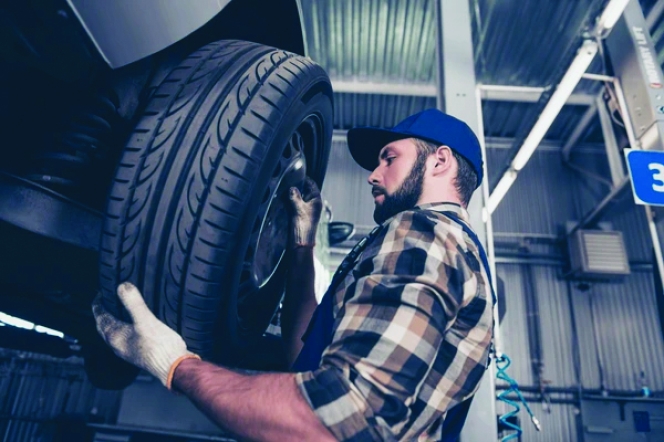
Service is being there to assist the client to experience less lost profit. Some may say pain; obviously, of the financial kind and not physical kind.
Navigating life’s challenges becomes considerably more complex when a flat tyre comes into play. Preferably first thing in the morning, as the tyre’s lost its pressure over night. The tyre wasn’t capable of delivering its usual level of service when you required it to do.
A tyre service delivery has the client’s wellbeing in mind when managing the usually large asset for a fleet operation that is known as ‘TYRES’. From initial selection through procurement service and end of first life, decisions are required based on experience, knowledge and data. Supply alone cannot support such an operation requiring service to monitor, measure, maintain and manage tyres in operation. In a round the clock operation, tyres don’t just operate on one shift.
Electronic surveillance is becoming part of daily life, no different for tyres. Uninterrupted service, but can you can stay awake long enough?
What has changed is the service a tyre now receives from tyre pressure monitoring. Operating at the appropriate pressure, a tyre can deliver the highest level of service it is capable of. The service provider now becomes the service receiver. Indeed, both are becoming the service controller with the delivery of smart tyres. The tyres provide service to the control systems of the vehicle, updating on current conditions and even considering what is to be experienced based on what the tyres are feeling, just as a human does, in delayed response.
THE SERVICE LOOP CLOSES.
Good service always should breed trust and respect and so loyalty. Unfortunately, sometimes prices come into play. As our industry knows only too well, quality is never (ever) low cost. If it’s too good to be true, it probably is. Is your (or someone else’s) life worth a fist full of money? Bean counters have a lot to answer for when it comes to tyre operations.
Service is supporting your client to assist them to generate a profit. Would you turn away someone who helps you make money? So how do we assist to reduce the pain point? Real-time tyre pressure monitoring, know the issue before it becomes a problem, before the hazard threshold is crossed. With ease data can be streamed in real time. A tyre service centre is able today to alert a fleet operator that a tyre is in need of attention, before the situation develops into a catastrophic tyre failure. The nearest service facility can be alerted, the vehicle with the problem tyre already known to the service facility is attended to and returned to service. The service loop closes again. The tyres assist you making a profit, ergo a service provider.
Someone or something that makes my life better is to me a service provider. I consider that a reflection of the trust a client invests in their supplier to be a prime indicator of the level of service that is utilised. There are times when service is ridden rough shod over as price becomes the primary driver. Service suffers, returns from the tyre operations fall as tyre costs rise, though more importantly, machine availability drops. Remember, the sweet low price is long forgotten when low quality is found.
What is your level of service to your clients? Will they return to you or go looking elsewhere?
Our tyres rarely complain and endure the harsh conditions we ask them to operate in, without attention and generally without any care.
Remember the level of service your tyres provide to you and yours. Can you emulate this level of service provision to your clients, friends and family?
Take care, stay TyreSafe!
Driving Forward Through Uncertainty
- By Rajiv Budhraja
- September 04, 2025
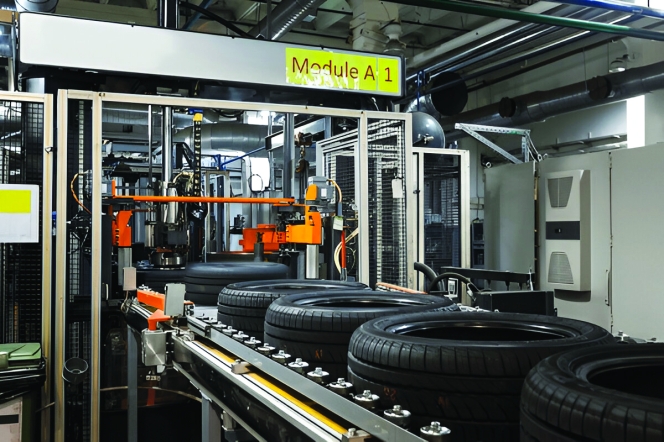
The past few years have not been easy for Indian industries. From post-pandemic recovery and supply chain issues to trade policy shifts and geopolitical conflicts, businesses across sectors have been navigating uncertainty. Yet, amidst this turbulence, the Indian tyre industry is emerging resilient – steadily carving out a global presence and positioning itself as a poster boy of India’s manufacturing story.
In the last one month alone, three developments have highlighted the strength, adaptability and future-readiness of the Indian tyre sector. Together, they offer a glimpse into an industry not only responding to challenges but also reimagining the road ahead.
Despite rising protectionism and the lingering aftershocks of disrupted global supply chains, Indian tyre exports have continued their upward march. In the last fiscal year, tyre exports from India have grown by nine percent year-on-year – a clear indication of global confidence in Indian-manufactured tyres. Tyre exports from India reached INR 250.51 billion compared to INR 230.73 billion in the previous fiscal, as per data released by the Ministry of Commerce, Government of India.
This isn’t just a story of volume. It’s a story of credibility – built on strong domestic manufacturing capability, world-class quality standards and a heightened focus on research and development.
Today, Indian manufactured tyres are competing with the best on parameters of performance, durability and cost-efficiency and providing a value proposition difficult to match. Indian tyres are exported to over 170 countries, with significant presence in the United States, European Union, Latin America and Southeast Asia. The US remains the top export destination, accounting for 17 percent of India’s tyre exports by value, followed by Germany (six percent), Brazil (five percent), UAE (four percent) and France (four percent).
With an estimated annual turnover of INR 1 trillion and exports exceeding INR 250 billion, the Indian tyre industry stands out as one of the few manufacturing sectors in the country with a high export-to-turnover ratio.
This export momentum has been further facilitated by the government’s active support in promoting domestic manufacturing through Make in India and other export-enabling reforms.
Perhaps nothing captures the maturing of the Indian tyre industry better than the recent global rankings by Brand Finance, the world’s leading brand valuation consultancy, which features four Indian tyre manufacturers – MRF, Apollo, CEAT and JK Tyre – among the world’s 15 strongest tyre brands. In fact, MRF, with a Brand Strength Index (BSI) score of 83.5, ranks as the third strongest tyre brand in the world after Michelin and Goodyear, according to the Brand Finance report.
This is not mere symbolism. It reflects decades of effort in building product trust, expanding global footprints and investing in brand equity. From high-performance radial tyres to off-the-road solutions, these companies are not just making tyres – they are shaping mobility experiences across geographies.
If the present is promising, the future looks even more exciting. A Vision 2047 report by PwC forecasts a CAGR of 11–12 percent for the Indian tyre industry over the next two decades. That is not just encouraging – it’s transformative.
This projected growth rides on several powerful drivers including rising demand from rural and semi-urban India, rapid growth in two-wheeler and commercial vehicle segments, a paradigm shift towards electric mobility and smart transport, greater OEM activity within India as global players deepen their localisation strategies and government policy support that encourages domestic production and discourages non-essential imports.
It’s also a growth that aligns with national priorities – self-reliance, sustainability and job creation.
India’s tyre industry is no longer playing catch-up. It is setting benchmarks. It is innovating, expanding and winning trust in markets around the world. It is making bold bets on sustainability, supply chain resilience and digital transformation. Tyre manufacturers in India have collectively invested nearly INR 270 billion over the last 3-4 years. These investments, spanning both greenfield and brownfield projects, highlight the industry’s confidence in India’s long-term growth potential and the industry’s commitment to capacity expansion and technological advancements.
As we steer towards 2047 – India’s centenary of independence – the tyre sector stands ready to play a pivotal role in the journey. One that connects not just places but aspirations.
Rajiv Budhraja is Director General of the New Delhi-based tyre industry association, Automotive Tyre Manufacturers’ Association (ATMA).The views expressed here are personal.
Engineering Giants: OTR Tyres… The Science Behind Extreme Performance
- By Ertugrul Bahan
- August 15, 2025
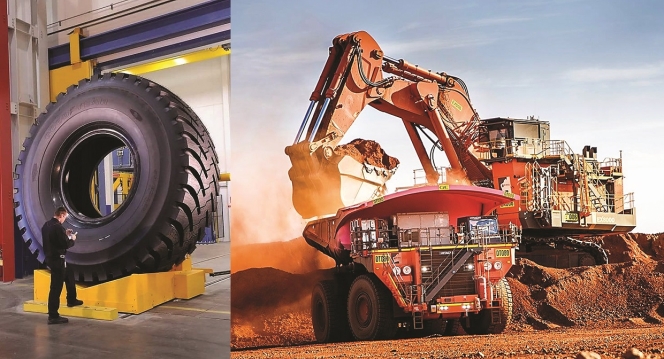
OTR tyres, rugged design and advanced technology that withstand the most demanding conditions... From mining to construction, these giant tyres play a critical role in keeping industries running smoothly.
What does the term ‘off-road tyre’ mean to us? Giant, robust, special and imposing – a tyre for heavy-duty vehicles. While there are already some tracked loaders and cranes on the market, stationary work, excavation, loading and transport are carried out with mobile machinery in open-pit mines or on heavy-duty construction sites. Transport vehicles, cranes and large-capacity loaders are always equipped with robust and durable rubber tyres. The last 50 years have seen a true revolution in the off-road tyre segment, as tyres have become larger every decade. Newer dump trucks have higher load capacities, requiring the installation of larger tyres to meet this growing demand.
Today 3,500-plus hp engine big haulers loaded carriage capacity reaches to 400-plus tonnes equipped with a tyre such as 59/80R63 extra load size. Such trucks are coupled with loaders having a shovel capacity of 60 tonnes on open pit areas. These load capacities are enormous, and the new generation of trucks offers even more. Tyre sizes up to 63/80R63 or some other size combination with low platform and wider dimensions are in the market.
Thirty to 40 years ago, tyre sizes for 50-80-tonne haulers were around 36.00-51 or smaller. Today, we are talking truck carriage capacities of 450-500 tonnes with hybrid engines. More efficient AC electrical drive haulers and having tyre sizes up to 70-inch rim size tyre are on the pipeline. These vehicles will be able to accommodate tyres with a diameter of over four metres, a weight of over 5.5 tonnes and a load capacity of over 120 tonnes per tyre.
High-tensile reinforcement materials and new generation rubber compound technologies play an important role in these revolutionary developments.
Extreme conditions, extreme performance, heat and puncture resistance for uninterrupted operation... This is how OTR tyres master harsh environments (quarries, mines, construction sites).
Tyres for open-pit mining, underground mining and construction remain separate categories. Their dimensions and basic requirements also vary. However, load capacities and the number of autonomous structures with electric motors and ultra-wide tyres are steadily increasing. The use of advanced materials in self-monitoring tyres with integrated pressure and wear sensors will become more widespread. Giant radial tyres for electric vehicles will proliferate on the market.
Tyre demands for extreme load-bearing capacity, improved cut and tear resistance (against sharp, abrasive stones) and improved heat dissipation through deep tread patterns will increasingly prevail, in line with customer demands. While the tread depth of off-road tyres was only 50 to 60 mm in the 1970s, today’s deep-tread off-road tyres reach 100 to 110 mm. Radial construction with new compound and heat dissipation technologies enables off-road tyres with deeper tread patterns, which also represents a significant advantage for the circular economy. Low-temperature off-road tyres also offer higher and multiple retreadability.
Both bias-ply and radial off-road tyres face significant challenges such as heat, abrasion, traction, sidewall cuts and fire protection. Although current off-road tyre technology has advanced significantly compared to earlier radial off-road tyres, some brands use bias-ply reinforcement layers, primarily on the sidewalls or tread, for improved cut resistance. Bias-ply off-road tyres remain preferred for certain applications, particularly forestry and some mining tyres.
Titan International (USA) underscores its strong presence in the truck tyre market with its Mining & Construction Bias division. This underscores the strategic priority of these specific applications in the OTR tyre market. In the US, Titan focuses on cut-resistant compounds and special tread patterns for rock environments that perfectly meet the most stringent performance requirements of bias construction.
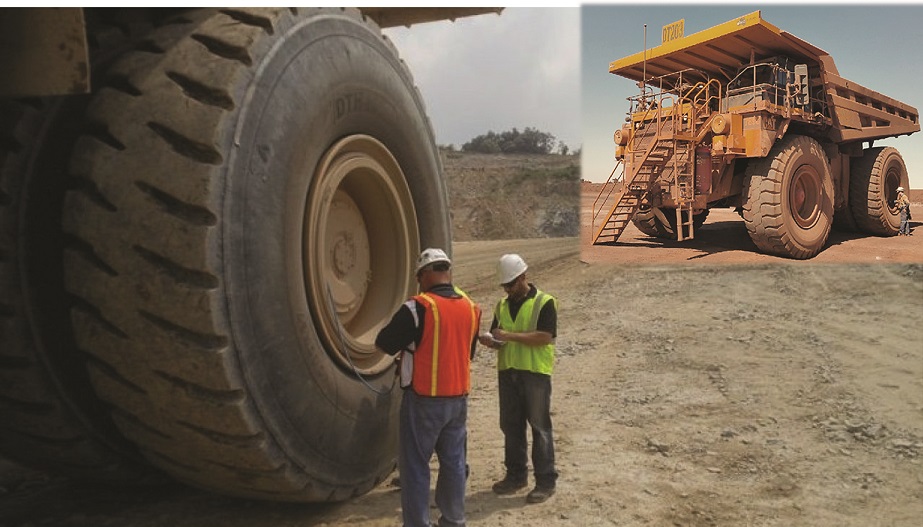
Michelin, Bridgestone and Goodyear dominate the OTR tyre market, with demand varying regionally. Large tyres for mining, underground mining and construction require durability, heat resistance and smart technology to meet the changing needs of the industry.
Michelin, Bridgestone and Goodyear dominate the global OTR tyre market, but Continental and BKT are also important players. Titan, Yokohama, the Chinese company ZC Rubber and the Indian company Apollo are other niche players that could disrupt global markets with more affordable alternatives. Furthermore, regional demand varies considerably between Asia, North America and Europe due to different mining, construction and regulatory environments. This benefits the different brands, whose combined commercial and technological strengths differ.
Michelin, Bridgestone and Titan (North America and Australia) produce giant mining tyres up to 63 inches wide. BKT, Apollo and ZC Rubber produce low-cost mining tyres in Africa, Latin America and India. Michelin and Bridgestone generally offer smart, autonomous tyres in North America and Europe. Yokohama and Continental (Japan and Scandinavia) offer underground and speciality tyres.
For open-pit mining, powerful electric-powered dump trucks and wheel loaders will offer exceptional load-bearing capacity (over 100 tonnes per tyre). They feature cut and chip resistance (against sharp, abrasive rocks), heat dissipation and a deep tread pattern, which will become increasingly popular.
Underground mining vehicles with narrow low-profile tyres and dump trucks (LHD), on the other hand, will be equipped with compact, fire-resistant low-profile tyres. Their low flammability, puncture resistance and high manoeuvrability will also be important criteria.
Large Scale Construction vehicles like massive dozers, graders, dumpers, articulated dump trucks and motor graders will need high traction tyres for both mud and loose surfaces with reinforced sidewalls to avoid cuts and having high longevity (mixed on road/off road use).
OTR tyre manufacturers compete on durability, profitability and performance. Their primary challenges are extending tyre life, optimising fuel efficiency and reducing wear.
All of the major OTR tyre manufactures need to compete in this high demanding segment of the tyre industry. The biggest challenge in every segment is achieving a long service life without tyre failure. Improved traction and rolling resistance, as well as reduced maintenance requirements, are real advantages.
The cost of a set of tyres is always divided by the total number of labour hours to determine the unit cost per tyre hour. Various parameters influence tyre and other operating costs. To minimise fuel and tyre costs in mines, better road maintenance, operator training in environmentally friendly driving (acceleration/braking), monitoring tyre pressure and loading and the use of predictive analytics (telematics to measure fuel consumption and tyre wear) are essential.
Overloading increases tyre stress, accelerating wear and fuel consumption. Poor road conditions with potholes and spills lead to more cuts and flat tyres, increased rolling resistance and higher fuel consumption. Harsh acceleration or braking always leads to overheating and faster wear. Although large radial-body trucks cost nearly USD 100,000, every preventative measure and maintenance is essential for business reasons.
Innovations such as RFID, flame-retardant compounds and environmentally friendly materials are driving the industry forward. OTR tyre manufacturers compete with specialised designs: mining tyres must be cut-resistant, earthmoving equipment must be durable and port tyres focus on efficiency.
Tyre manufacturers must survive in this highly competitive and demanding industry. Mining tyres are exposed to extreme conditions and require cut resistance thanks to highly abrasion-resistant compounds and additional steel belt layers. Earthmoving tyres require flexibility and durability thanks to all-season tread compounds and rock-resistant designs. Port logistics tyres feature low rolling resistance and chemical resistance thanks to lightweight steel belts. RFID tracking offers real advantages for tyre tracking.
Innovations for niche applications are also essential for brand building and address specific challenges. Some underground mining tyres feature non-marking and flame-retardant compounds for enhanced safety and performance. Arctic tyres require low-glass transition temperature polymers and microspike technology for better traction in extreme cold. As always, off-road electric tyres require improved efficiency and lower noise levels.
The use of recycled materials poses a real challenge for this segment, but more durable designs certainly reduce waste and replacement frequency. However, bio-based compounds and recycled rubber must be more widely integrated into new products.
Key trends in the OTR tyre segment include intelligent monitoring systems, environmentally friendly compounds and improved reinforcement techniques. Graphene-reinforced tyres promise extremely high strength and heat resistance. Sustainability will be a priority in OTR tyre manufacturing, with a focus on reducing environmental impact through innovative materials and designs.


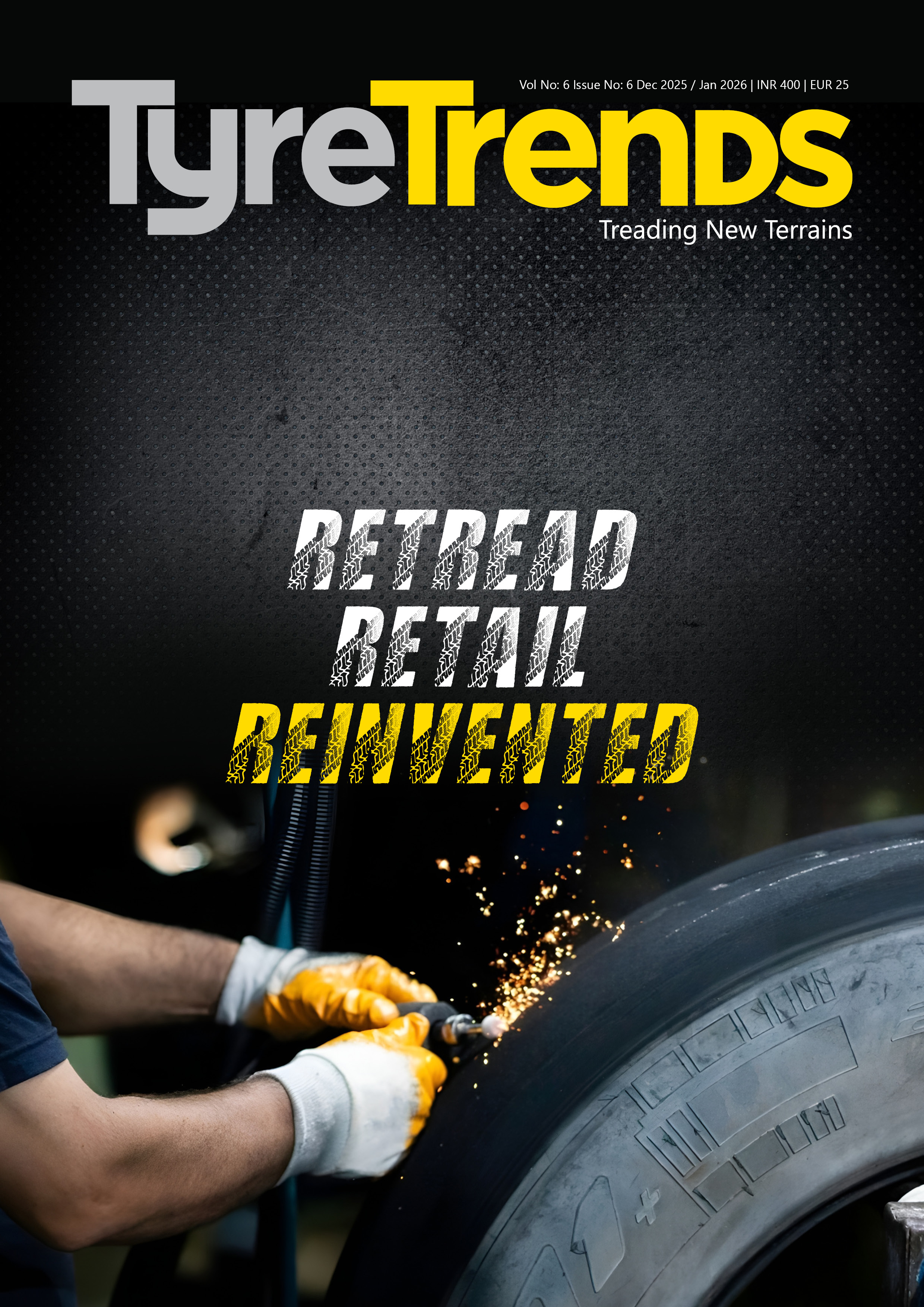
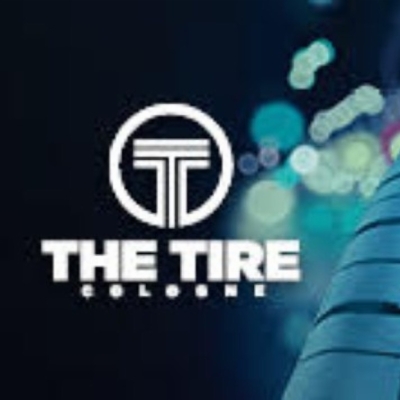
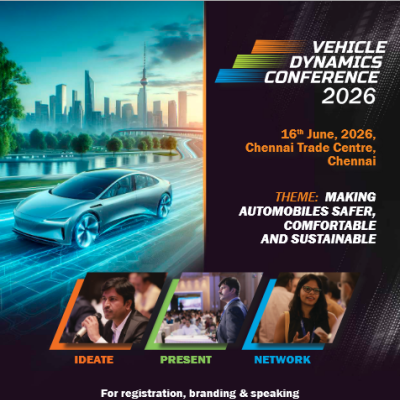

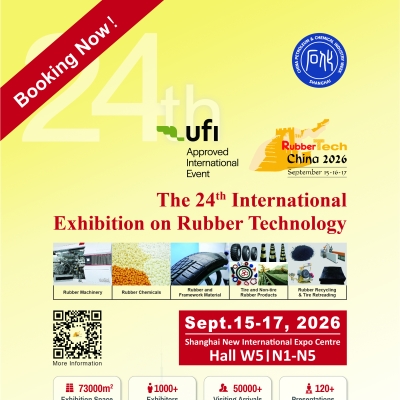
Comments (0)
ADD COMMENT